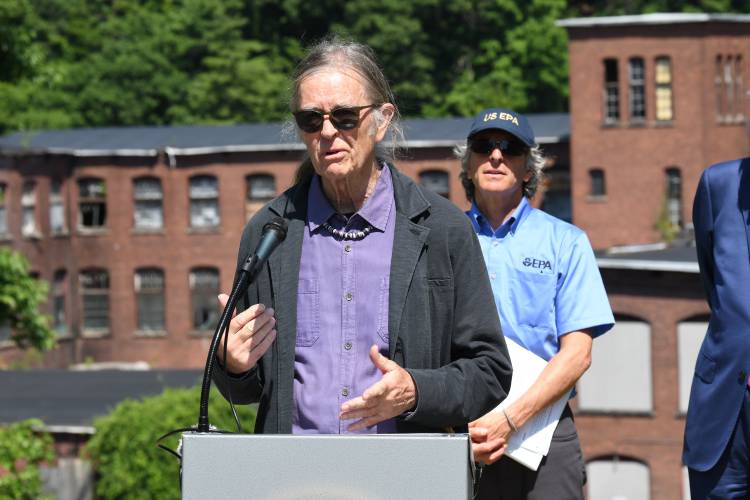David Brule of Nolumbeka Project giving talk on Hatfield’s role in King Philip’s War

David Brule, president of the Nolumbeka Project, will lead a talk in Hatfield on Thursday discussing the town’s pivotal role in King Philip’s War. STAFF FILE PHOTO/PAUL FRANZ
| Published: 05-13-2025 11:26 AM |
HATFIELD — The town’s pivotal role in King Philip’s War nearly 350 years ago will be the topic of a presentation this week by local historian David Brule, president of the Nolumbeka Project.
Brule’s talk, “King Philip’s War: The War in Your Backyard,” will be held Thursday at 6 p.m. at the First Congregational Church of Hatfield, 41 Main St., during the Hatfield Historical Society’s annual meeting. The presentation is free and open to the public.
Brule, coordinator of the National Park Service study of the Falls Fight of May 19, 1676, will discuss a summary of the findings from this research, as well as retrace local events of the war in Hatfield, including an October 1675 attack that killed colonists and saw their barns burned. At the time, Hatfield was a place where those living in Deerfield and Northfield sought refuge and where supplies and equipment were stored.
King Philip’s War developed after an intensified push by European colonists against the Wampanoag, Narragansett, Pocumtuc, Nipmuc and Wabenaki nations and English colonists taking up more land in Massachusetts, despite previous treaties. Metacomet, a Wampanoag leader known to the English colonists as King Philip, was at the heart of this effort to repel the English.
Events in both 1675 and 1676 led the surrounding Indigenous people to gather as refugees at a traditional place of peace and neutrality, the bend in the Connecticut River that became Turners Falls. On the morning of May 19, 1676, though, the English opened fire on this camp.
King Philip’s War would become one of the most deadly in American history, claiming one in 10 lives per capita, in both colonial and Indigenous communities. Hatfield’s most notorious attack, though, didn’t take place until mid-September 1677, when more than a dozen colonists were killed or wounded, and 17 captives were marched to Canada.

 South County Notebook: Aug 17, 2025
South County Notebook: Aug 17, 2025 Mohawk Trail students to see new staff, new codes of conduct upon Aug. 27 return to school
Mohawk Trail students to see new staff, new codes of conduct upon Aug. 27 return to school Grand opening of Buckland-Shelburne Elementary School playground set for Aug. 26
Grand opening of Buckland-Shelburne Elementary School playground set for Aug. 26 Bear-y unwelcome: Why MassWildlife says it’s time to ‘break up’ with bird feeders
Bear-y unwelcome: Why MassWildlife says it’s time to ‘break up’ with bird feeders
